The Cinémathèque suisse’s Film Department manages the entire collection of audiovisual works, whatever the medium and format : film (690 million feet), video, digital files. In 2022, it will have over 85,000 film titles, a collection that is growing constantly. The department's work is structured around the four key areas detailed below.
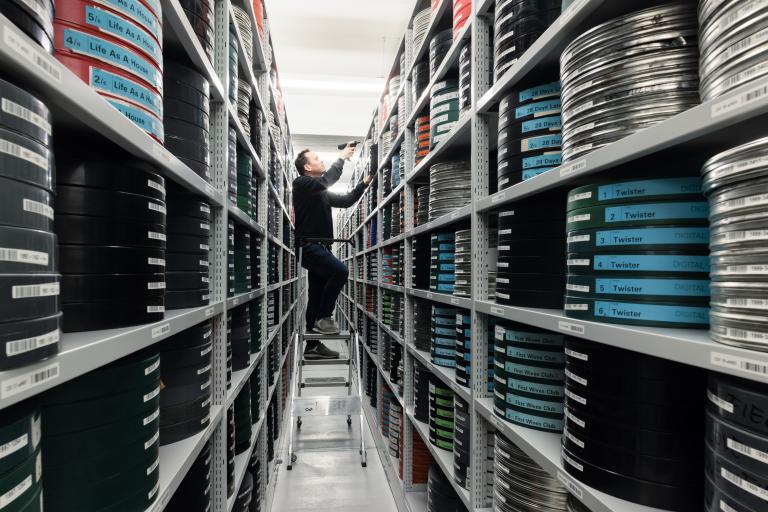
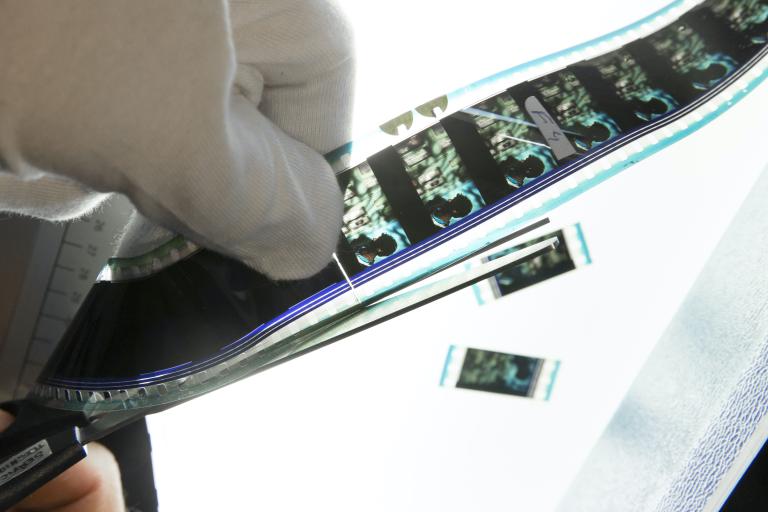
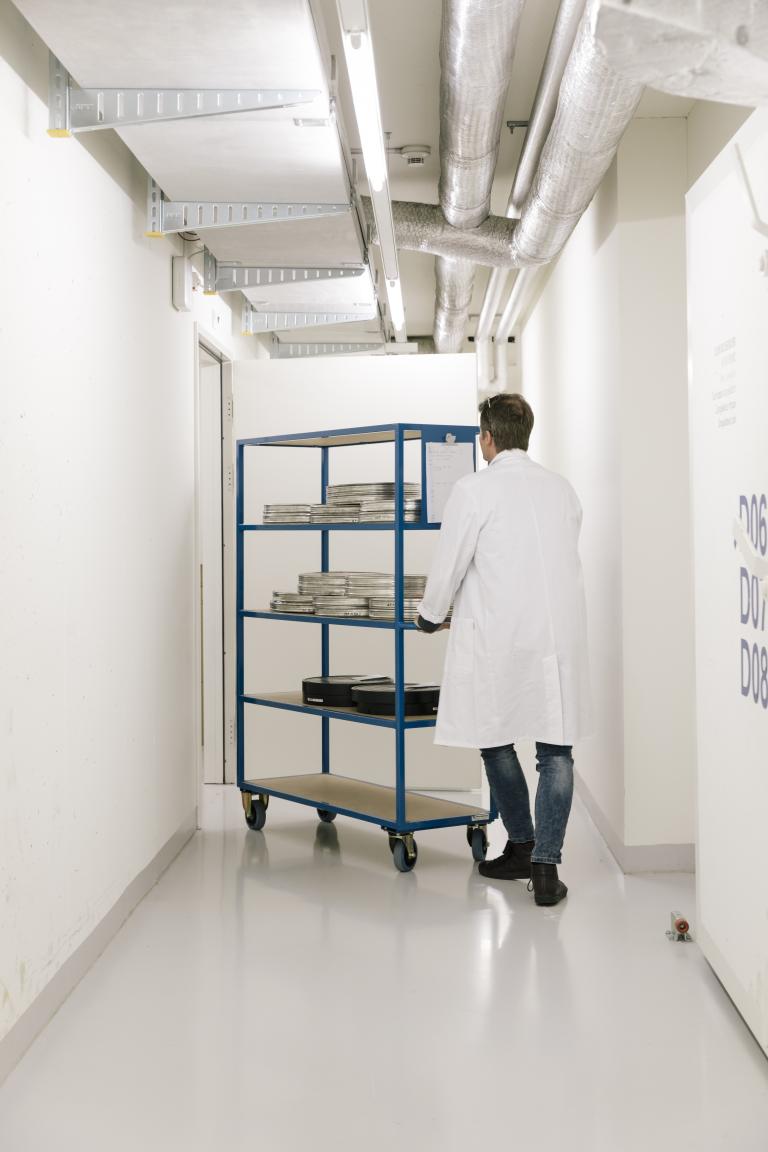
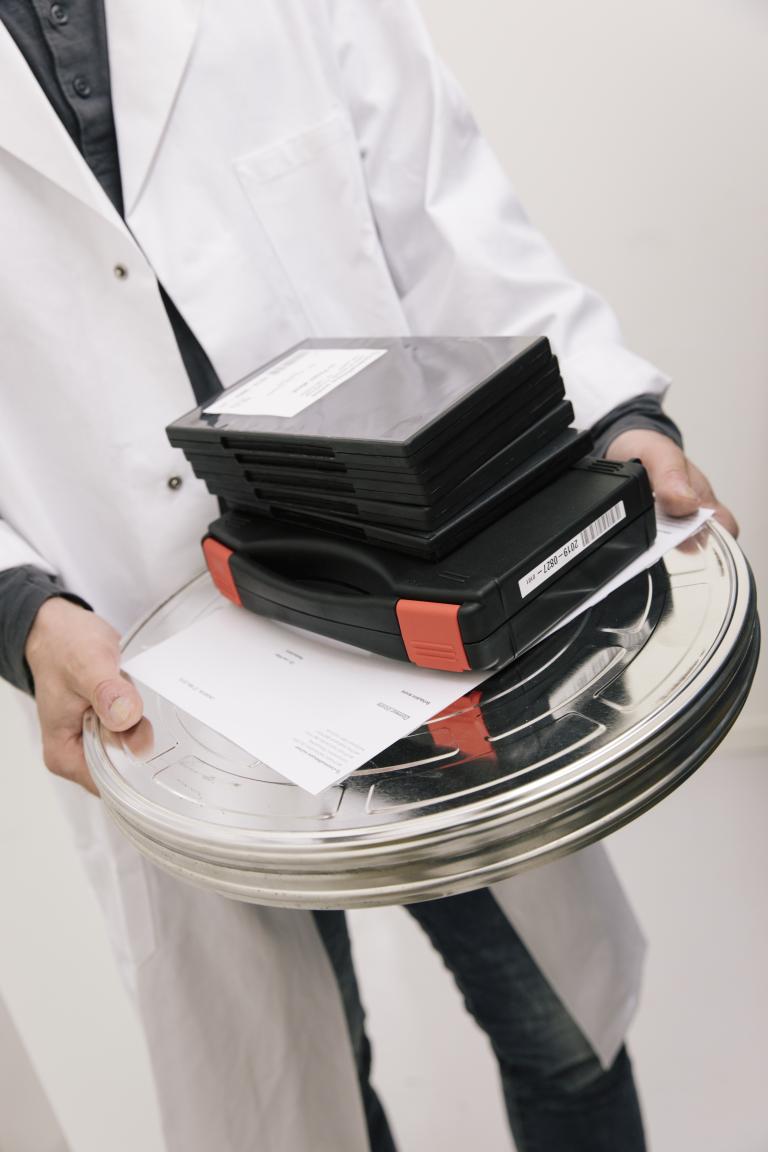
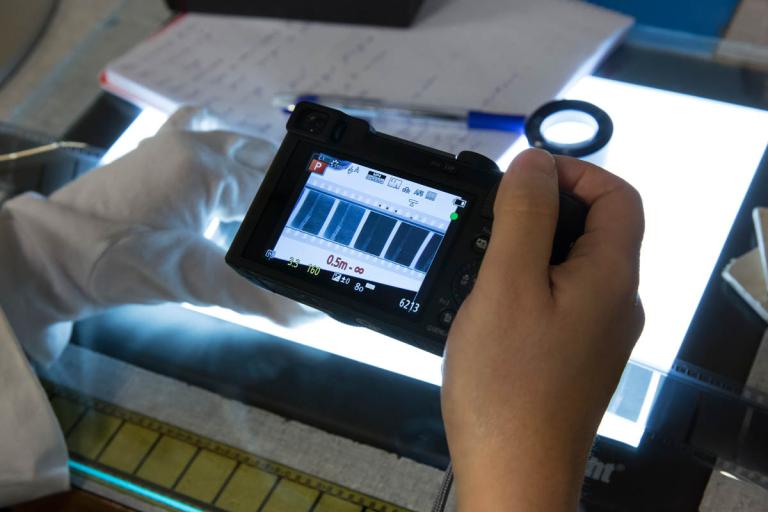

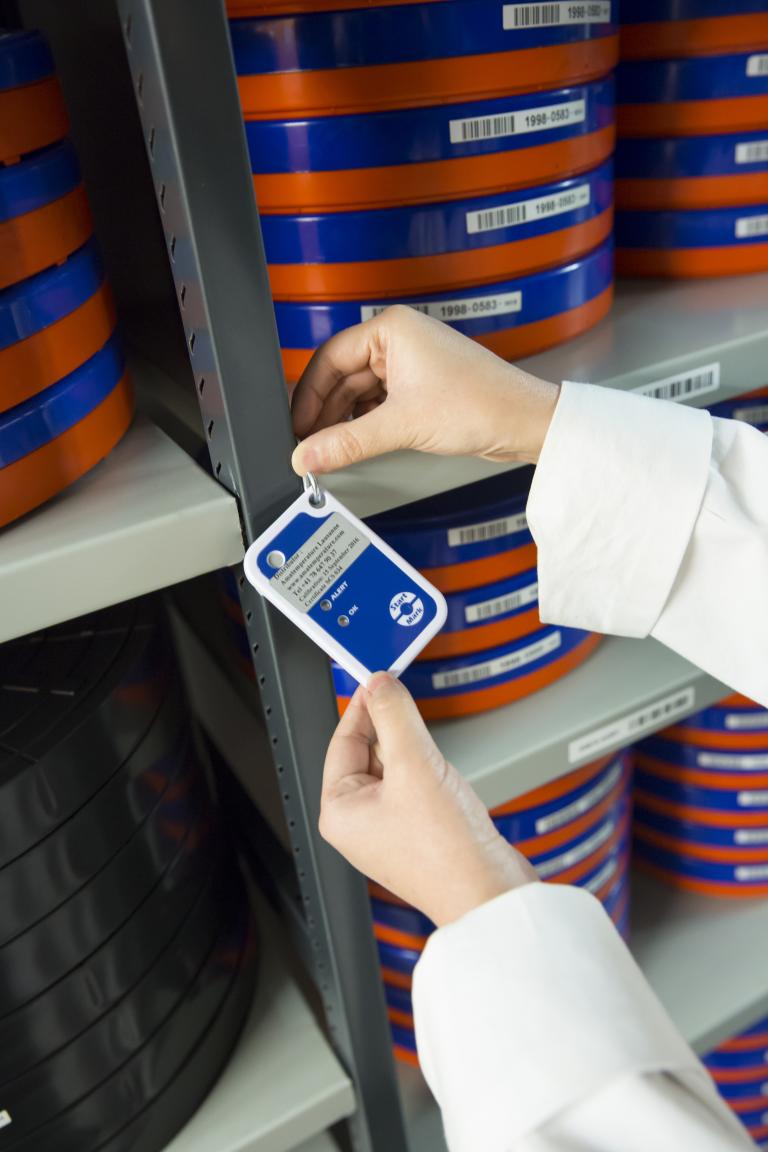
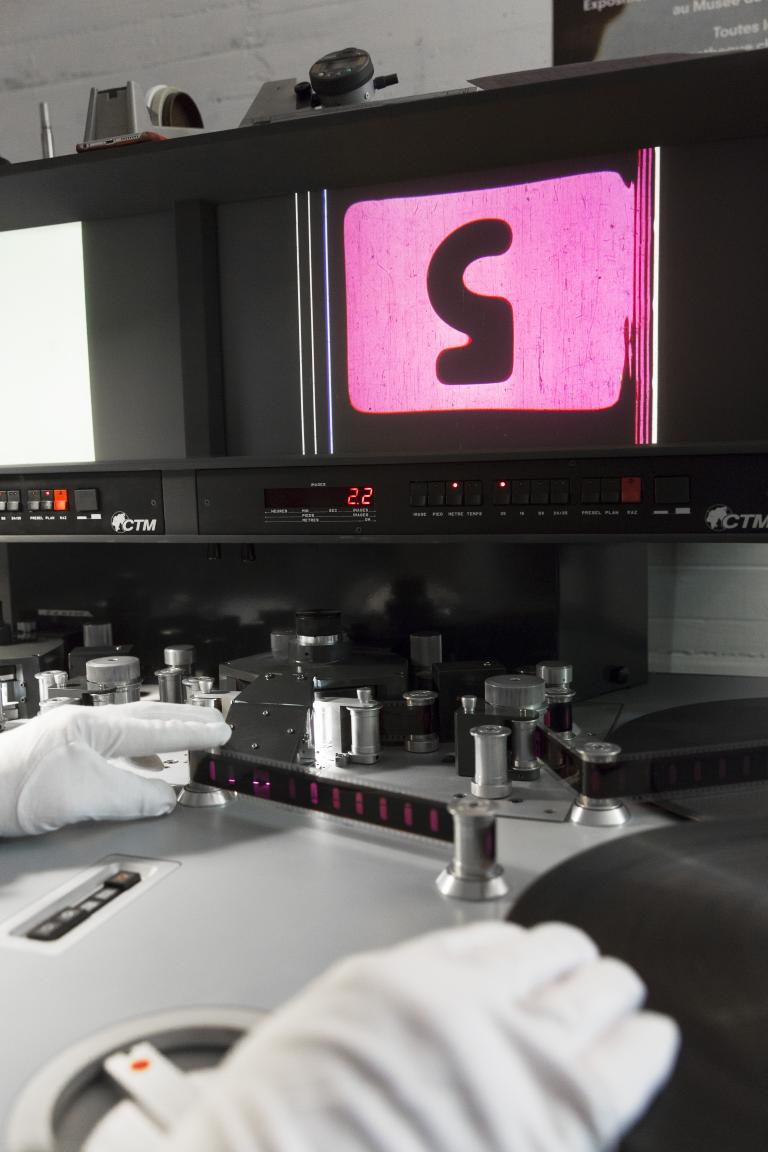
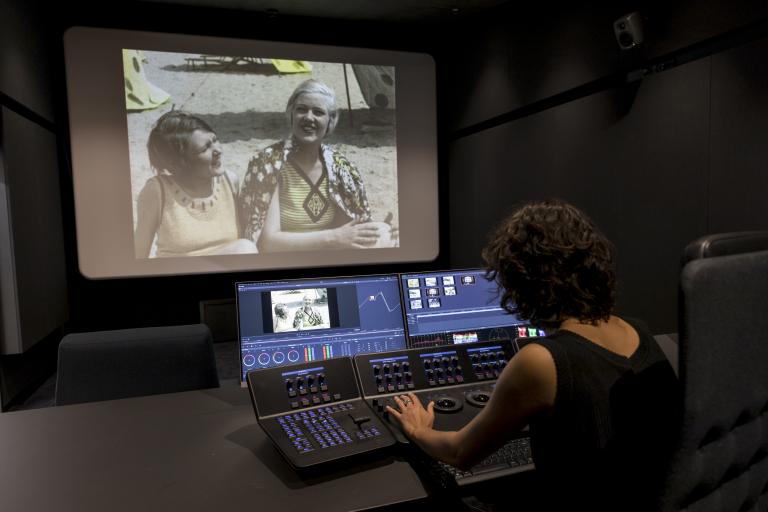

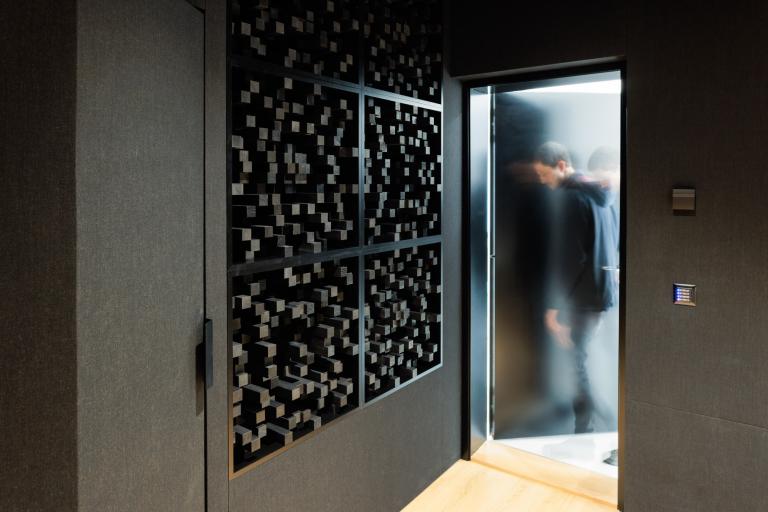

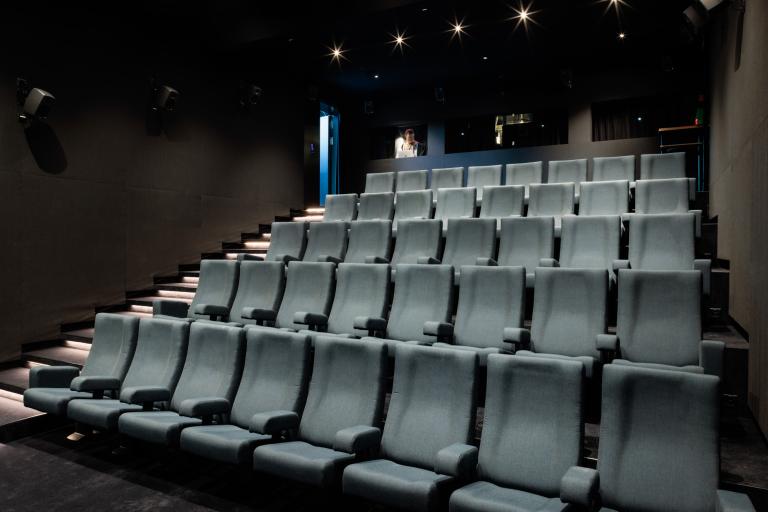
Number of images 1 / 13
Recording of 35mm boxes in the film cells © Cinémathèque suisse / Pierre-Yves Massot
Acquisition and documentation
Every year, Cinémathèque suisse’s Film Department receives more than 400 deposits of analogue and digital material: official deposits of films supported by the Confederation and regional funds, deposits or donations from filmmakers, producers, distributors, cultural institutions, foundations or individuals. On average, this represents 3,000 film titles, more than 9,000 rolls of film, nearly 1,000 video media of all kinds and hundreds of digital files per year. These works must then be analysed and documented.
Conservation and restoration
In the area of film preservation, restoration and digitisation, the Cinémathèque suisse establishes criteria based on the condition of the films (urgency to preserve endangered works), particular technical characteristics representative of the history of cinema, the artistic importance of the films and the rarity of the subjects. In agreement with the Confederation and in accordance with the institution's collection policy, priority is given to "Helvetica", a concept that includes all works that are part of the Swiss film heritage.
The department restores around 40 short films and six to seven feature films per year, in collaboration with external laboratories and with the support of the Memoriav association. The restored films in the collection are promoted by the Cinémathèque suisse through numerous screenings at festivals, in cinemas, on television and via streaming.
The sector is also responsible for supervising the conservation of the photochemical collection, which requires regular monitoring of its condition and the establishment of new conservation strategies for films originating from digitisation or native digital.
Digital production
The Cinémathèque suisse, in collaboration with the Swiss Confederation, is digitising its Film collections to facilitate access and distribution. The institution's digital laboratory is now equipped with all the tools and infrastructures – image and sound scanners, colour grading rooms, sound studio, video technology... - that allow the digitisation of films (some of them in danger) in very high quality.
Even if, in the interests of preservation, the Cinémathèque suisse favours the medium of film, in 2012 it acquired two LTO (Linear Tape-Open) storage libraries. These libraries operate in mirror mode and are installed in secure premises at the Research and Archiving Centre in Penthaz. The amount of storage currently used is 5 PB (petabytes) per library (10 PB in total).
Making the collections available
Part of the Film collections is currently available for consultation by appointment only by professionals in the field, and will soon be available online. The department regularly provides extracts or moving images for research purposes, film projects, and for events or exhibitions. In addition, it sends numerous analogue and digital copies of these vast collections for screening in Switzerland and around the world. It manages the collection of the Ciné-Journal suisse, newsreels produced between 1940 and 1975, which are available for consultation on Memobase.
Since the 2000s, the Cinémathèque suisse has been publishing archive images in DVD format. It has contributed to numerous boxed sets that promote Swiss film heritage, including newsreels, commissioned films and fictional masterpieces, which are for the most part available in the online shop. Several portals and platforms including Play Suisse and filmo.ch put some of its restorations and digitisations online. The institution also puts short films online on her own page.














